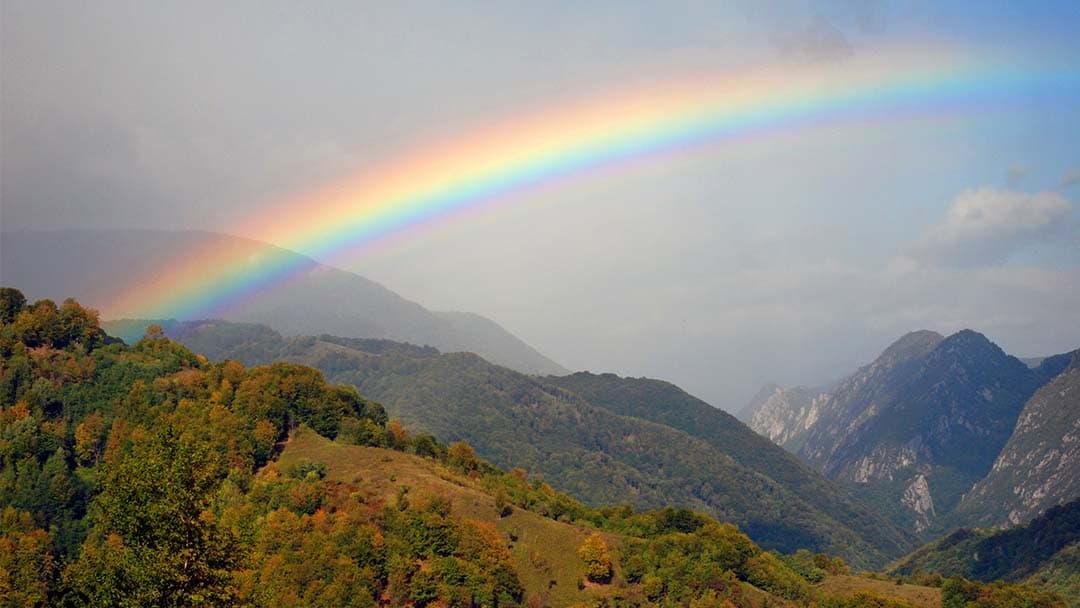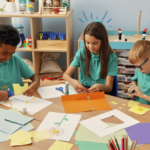Primary school children are required to learn all about light, shadows, and reflection as part of the primary science programme of study. In year 2, pupils need to be able to understand how plants need light to grow and stay healthy. By the end of year 6, pupils should be able to recognise that light appears to travel in straight lines as well as explain how we see things due to the way light travels.
Light is not the easiest topic to teach, not least because scientists themselves continue to argue about what is the best way to describe how light travels.
Whilst they argue that one out, our guide will provide you with some basic explanations to use with children as well as some ideas about how to teach light to primary-aged pupils.
What is light?
Light is a type of energy; it helps us to see the world around us. There are many different sources of light, including the electric lights in your classroom. However, the main source of light energy comes from the sun.
What is light energy?
When light travels from its source to an object (like the classroom light to a desk) energy travels between those two points. That energy travels in waves (like the ones you see when you visit the seaside, but A LOT smaller). This is light energy. We can’t see light energy; we can only see the result of it… the ability to see things!
Sources of light
There are loads of sources of light. There’s the one we all know and love: the sun. But there are light sources all around us. Electric lights have been used since Victorian times to see in the dark. Light also comes from things that are burning, as well as some animals such as fish and fireflies.

Properties of light
Speed of light
Light travels in waves and it travels fast – at approximately 186,282 miles an hour. To put that into perspective, the average human travels at 1 mile an hour when walking; the average car speed on the motorway is 69 miles per hour; and the fastest roller coaster in the world goes at 149 miles per hour (Formula Rossa, Abu Dhabi, 2020).
In other words, light travels so fast, we cannot see it travelling.
Measure of light
Scientists measure light in wavelengths. Waves have peaks and valleys; they go up and down. The distance between two peaks is called a wavelength.
Light colour
The colour of light depends on the wavelength of the light. For example, red light has the longest wavelength. Violet has the shortest. Orange, yellow, green, blue, indigo fall in between red and violet. When all the different colours travel together the light appears white to us.
Light and shadow facts
- If light waves are blocked by an object that won’t allow light through, it can create shadows.
- Shadows made from blocking the sun’s rays are longer in the winter because of the position of the sun.
- The first ‘clocks’ used the sun’s shadow to tell the time. You can sometimes find them in gardens; they’re called sundials.
- Any object – living or not – that can block light, can cast shadows.
- Light can go through some objects and not others. Objects that let light through are called transparent, e.g. windows.
- Objects that only let some light through are called translucent e.g. balloons.
- Objects that don’t let any light through are called opaque e.g. human beings.
What is refraction?
Whilst light moves in waves, it travels in a straight line, called a ray. However, when light passes through transparent objects like water or glass, the light bends and turns. This is because the wavelength is changed by the object the light goes through. As a result, the direction and speed of the light wave changes and light will seem to bend and alter direction.
One amazing example of refraction is when you shine light through a prism. Prisms refract each colour that makes up white light (all the colours of the rainbow) at a different angle. When you shine white light through a prism, it creates a rainbow. In fact, this is exactly how rainbows are made in the sky. The raindrops act as prisms and refract the light from the sun to make the rainbow you see in the sky.


What is reflection?
We often think or mirrors when we think about reflection. But light reflects off all surfaces; it’s the reason we can see things.
Reflection off a mirror is called specular reflection. Specular reflection happens when you have a highly polished surface and shine a narrow beam of light onto it. The beam will reflect back off it. If you shine a strong torch at a mirror, you should get a strong beam reflecting back off it.
But most objects aren’t highly polished, so when you shine a light on something rough, the lights spreads all over the place. This is called diffuse reflection and it’s how we see objects around us.
If you can see your face in something, then this is specular reflection, if you can’t it’s diffuse reflection.
Light and life
Light is really important for life. If you have ever done an experiment with plants, you’ll know that the three things that plants need are light, water and nutrients.
Plants use the energy of light to combine gas in the air called carbon dioxide with water in the soil. This process is called photosynthesis and it is used for plants to make their own food. The plants are then eaten by humans and other animals for energy.
Plants are also needed because they give off oxygen which animals need to survive. Therefore, light is important to every living thing on earth.
How to teach kids about light?
There are some facts and definitions on the topic of light that are very difficult to grasp. One of the best ways to teach elements of light is to demonstrate.
Here are three ways to teach primary-aged pupils about light.
You can’t see in the dark
Children will often argue that they can see in the dark. When the lights go out at night, they can still see around their bedroom. Of course, this is due to some light providing them with this seeming superpower of sight in the dark.
Get children to create a ‘telescope’ out of black card. Ask them to predict what they will see when they place the tube firmly on the desk and look through it. This is a great way to explore the understanding of light. It demonstrates clearly that we cannot see without it.
Light that is blocked by opaque objects cause shadows
Light puppets are a great idea to explore the topic of light and shadows. Demonstrate to children how shadows are formed by putting objects in front of a light. They could experiment with transparent and translucent objects too.
You could mix up the activity by experimenting with the colour of light with our Rainbow Torches and make coloured shadows.
Light fact hunt
Go on a light fact hunt and find objects around the classroom (or school!) that reflect, absorb, refract, or transmit light. This will help solidify the light facts and help children apply their knowledge to real life.
You can either get children to go on a light fact hunt around the school or provide items on desks for pupils.


